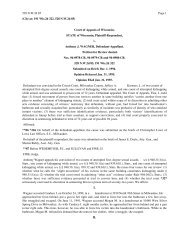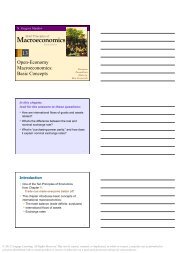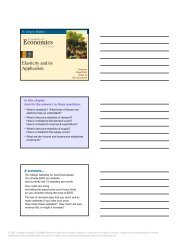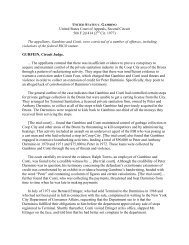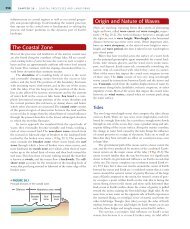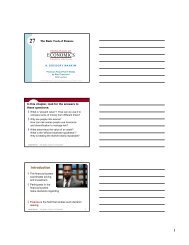Simulink Tutorial on Digital Modulation Methods - Cengage Learning
Simulink Tutorial on Digital Modulation Methods - Cengage Learning
Simulink Tutorial on Digital Modulation Methods - Cengage Learning
You also want an ePaper? Increase the reach of your titles
YUMPU automatically turns print PDFs into web optimized ePapers that Google loves.
590 CHAPTER 13. SIMULINK TUTORIAL ON DIGITAL MODULATION<br />
2. The maximum horiz<strong>on</strong>tal eye opening of T is obtained <strong>on</strong>ly for α = 1. The<br />
horiz<strong>on</strong>tal eye opening is determined by the transiti<strong>on</strong>s +1 →−1 and −1 →+1.<br />
Since for α = 1 the impulse resp<strong>on</strong>se satisfies<br />
⎧<br />
� � ⎪⎨<br />
1, n = 0<br />
nT<br />
1<br />
g =<br />
2<br />
2 , n =±1<br />
⎪⎩<br />
0, otherwise<br />
the respective lines in the eye pattern are zero at T/2.<br />
3. The bandwidth increases with increasing α. In the time domain the impulse<br />
resp<strong>on</strong>se is infinite in durati<strong>on</strong>. However, it decreases faster as α decreases.<br />
Now we examine square-root raised-cosine pulses with various roll-off factors (see<br />
Figure 13.18). Choose<br />
from the Pulse Shape menu.<br />
Pulse Shape > Root-RC<br />
Figure 13.18: Impulse resp<strong>on</strong>se and Fourier transform of a square-root raised-cosine<br />
pulse (α = 0.5)<br />
TUTORIAL PROBLEM<br />
Problem 13.5 [Square-Root RC Pulse]<br />
1. Are the zero ISI c<strong>on</strong>diti<strong>on</strong> and the maximum horiz<strong>on</strong>tal eye-opening c<strong>on</strong>diti<strong>on</strong><br />
met ?<br />
2. For which rolloff factor are square-root raised-cosine pulses and raised-cosine<br />
pulses identical?<br />
© 2013 <strong>Cengage</strong> <strong>Learning</strong>. All Rights Reserved. May not be scanned, copied or duplicated, or posted to a publicly accessible website, in whole or in part.



